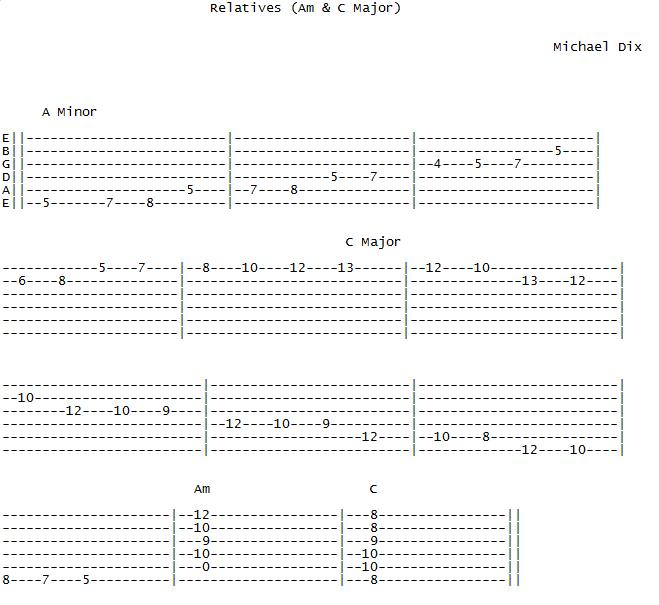Extending Scales Using Relatives
| Line 1: | Line 1: | ||
| + | [[Category:theory]] | ||
| + | |||
== Extending Scales Using Relatives == | == Extending Scales Using Relatives == | ||
In this topic we will learn how to extend a scale using its relative scale; in this particular case I will be starting with the A Natural Minor Scale and extending it using its relative Major Scale; C Major. | In this topic we will learn how to extend a scale using its relative scale; in this particular case I will be starting with the A Natural Minor Scale and extending it using its relative Major Scale; C Major. | ||
Current revision
Extending Scales Using Relatives
In this topic we will learn how to extend a scale using its relative scale; in this particular case I will be starting with the A Natural Minor Scale and extending it using its relative Major Scale; C Major.
It is possible to vastly extend, for example, a Natural Minor Scale by using its Relative Major Scale as an extension. I feel that this is often over-looked by guitar teachers and is an excellent way of providing a system where students can start soloing quickly, without having to learn ALL the scales and modes first!
Try it for yourself: If you start with the A Natural Minor Scale at the 6th String/5th Fret, when you get to the 1st String/8th Fret just keep on going : 10th Fret, 12th Fret, 13th Fret, then once you have reached the 13th Fret, you can easily descend from the A Natural Minor Scale by using its Relative Major: C Major: which ends at the 6th String/8th Fret. (see attached TAB)
Try this method of extending scales with other scales that you know already; its also a great way to learn your relatives visually on the guitar fretboard.
Enjoy!
By Mike Dix






